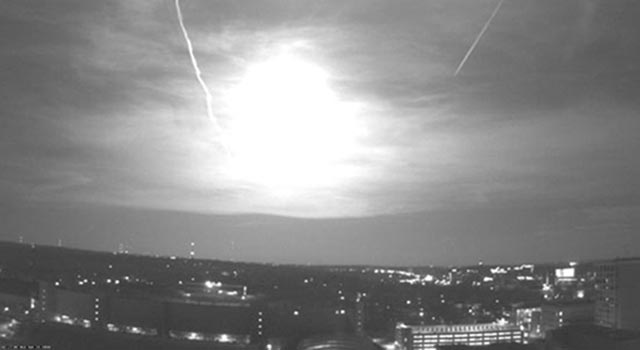According to NASA's Near-Earth Object Office website, data collected at the Marshall Space Center in Huntsville, Alabama, indicates that the fireball's parent body is not related to the Gamma Virgind meteor shower that occurred at the time the fireball entered the atmosphere.
By Nancy Atkinson

The websites used by astronomy enthusiasts Astro Bob and-Rocks From Space It was reported for the first time yesterday (Friday) that the first meteorite extractor was among the remains of the spectacular fireball that was seen over seven US states last Wednesday, April 14, 2010. Brothers Christopher and Ivan Bordeaux who live in southern Wisconsin located the fragment of what was probably a meter diameter rock, According to the assessment of NASA's Near Earth Object Office. Debris from Wednesday's fireball meteors fell over the town of Livingston, Wisconsin, in the area between the towns of Platteville and Avoca.
According to NASA's Near-Earth Object Office website, data collected at the Marshall Space Center in Huntsville, Alabama indicate that the fireball's parent body is not related to the Gamma Virgind meteor shower that occurred at the time the fireball entered the atmosphere. Instead, the small space rock most likely originated somewhere in the asteroid belt.

Michael Johnson, owner of the website Rocks From Space, says that according to Mike Farmer, a professional meteorite hunter, it appears to be an H chondrite meteorite.
In the video you can see raw images of the fireball from different angles.
http://www.youtube.com/watch?v=TUmRWrf5NJ8
More on the subject on the science website

7 תגובות
It seems to me that someone here urgently needs a brain transplant... that's the point!
It seems to me that they planted the earth
Mr. Point you are wrong Hollywood planted the pictures and video.
The scientists planted the meteorite.
: )
Did he spark lightning on the way? Or was it a blast to pieces?
Almost true, before the discovery, the fireball was considered a UFO crash by those who believe in it, the fact that a meteorite was found indicates that the identity of the object is already known.
The photograph proves that it is a UFO